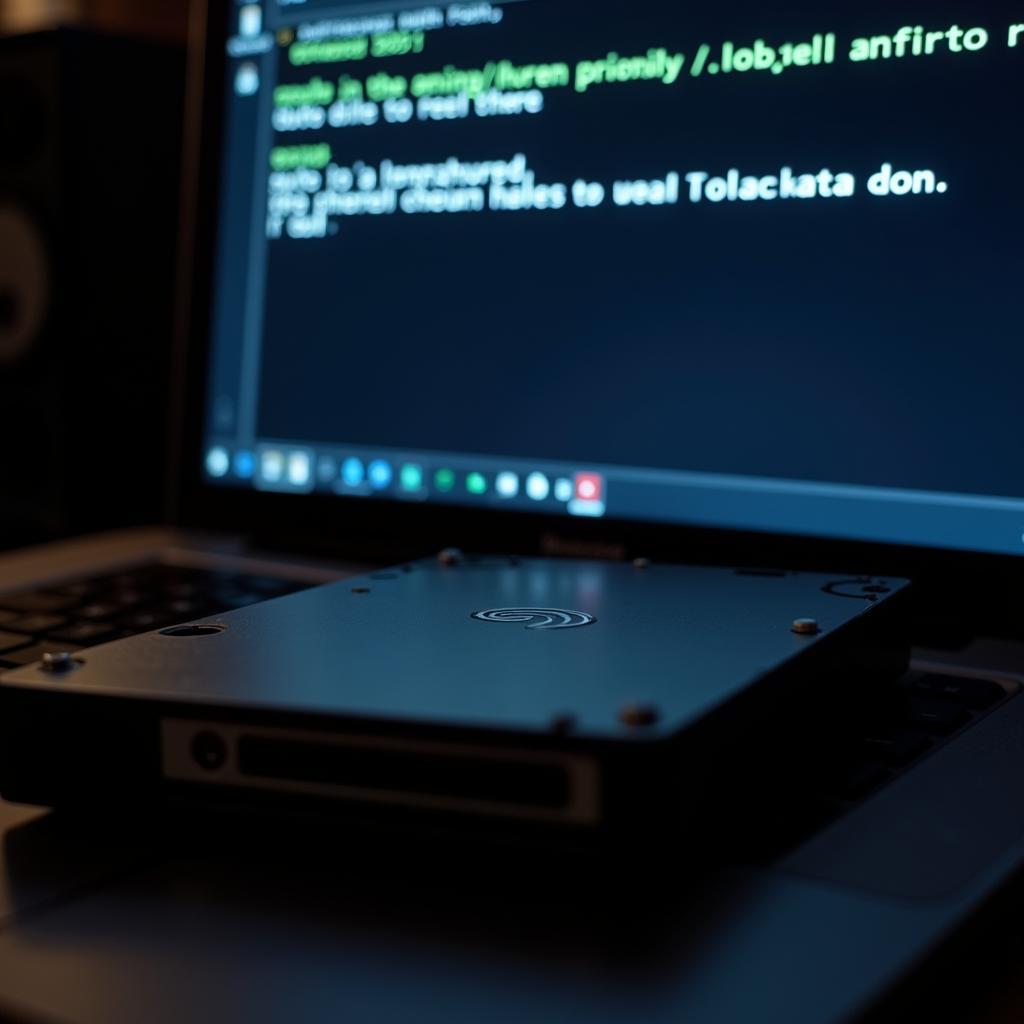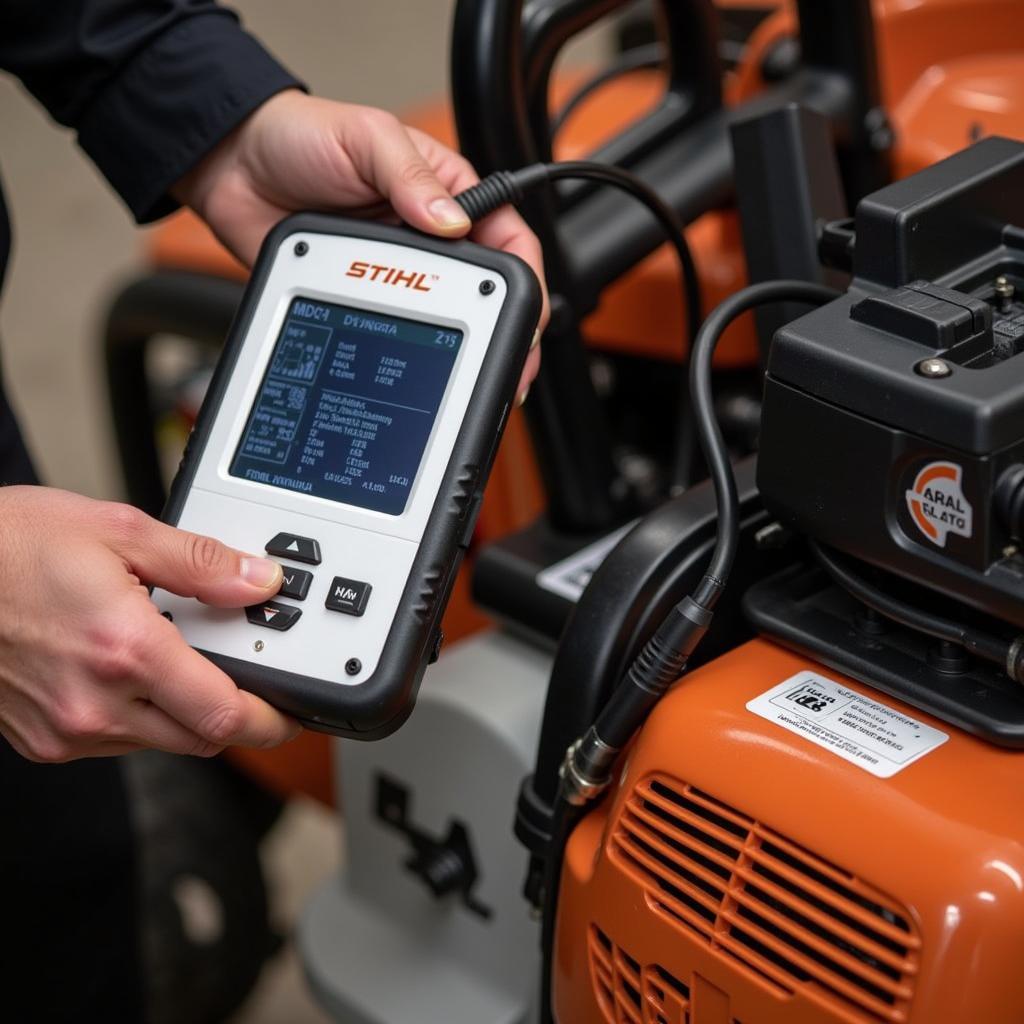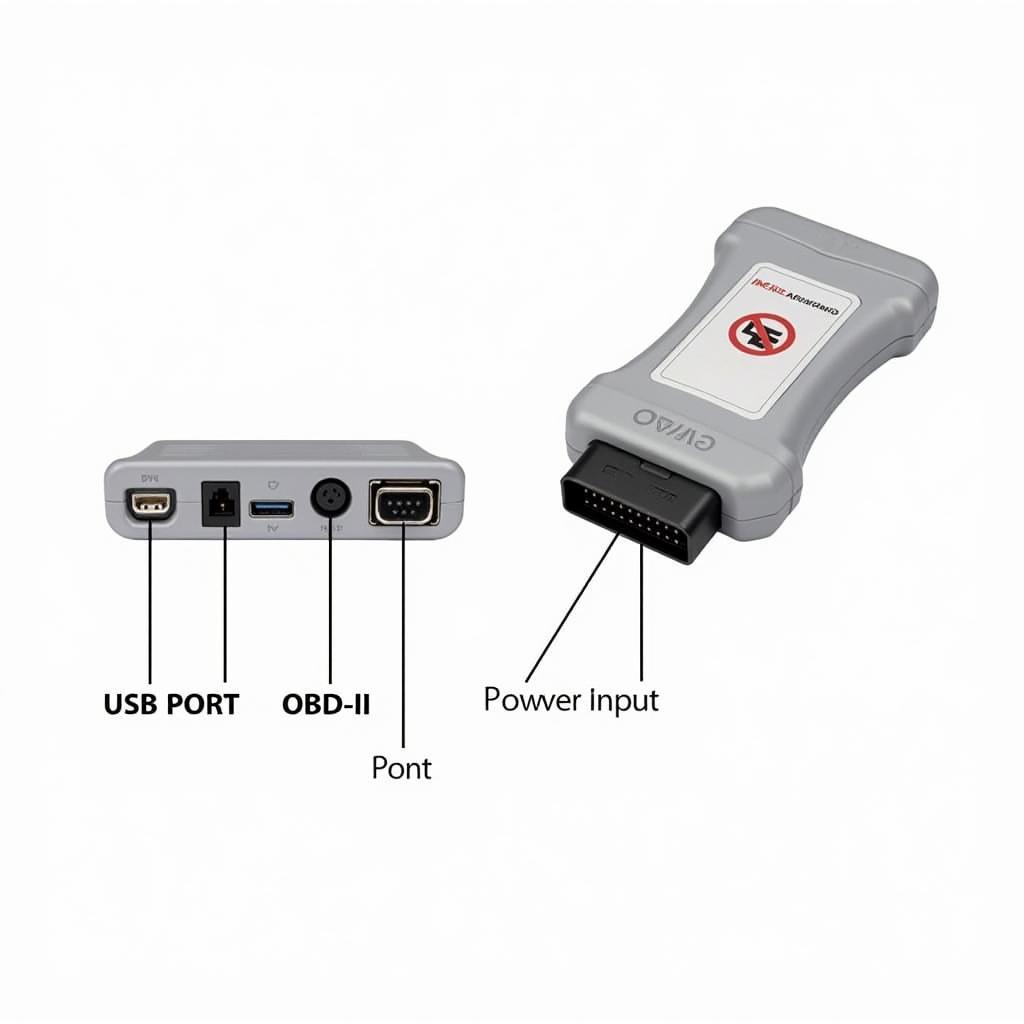A failing external hard drive can spell disaster for your precious data. Whether you’re a seasoned technician or an everyday user, having the right Seagate External Hdd Diagnostic Tool can mean the difference between a minor inconvenience and a major data loss catastrophe. This guide will walk you through the world of Seagate diagnostic tools, helping you understand the signs of a failing drive, choose the right software, and even interpret the results.
 Seagate External Hard Drive Showing Errors
Seagate External Hard Drive Showing Errors
Recognizing the Red Flags: When to Use a Seagate External HDD Diagnostic Tool
Before diving into the specifics of diagnostic tools, it’s crucial to recognize the warning signs of a failing hard drive. These can manifest in various ways, including:
- Slow Performance: If your computer takes an unusually long time to access files stored on your Seagate external HDD, it could indicate a problem.
- Unusual Noises: Clicking, grinding, or whirring noises emanating from your hard drive are often indicative of mechanical issues.
- Frequent Errors: Experiencing frequent file system errors, read/write errors, or blue screen errors could be a sign of impending hard drive failure.
- Disappearing Files: If files or folders mysteriously disappear from your external HDD, it’s time to investigate further.
These are just a few examples, and if you experience any of these issues, it’s essential to back up your data immediately and use a Seagate external HDD diagnostic tool to assess the situation.
Navigating the World of Seagate External HDD Diagnostic Tools
Seagate offers a suite of powerful diagnostic tools designed to help you identify and potentially resolve issues with your external hard drive. Let’s explore some of the most popular options:
1. SeaTools: This comprehensive suite of diagnostic utilities is a go-to solution for many Seagate users. It comes in two flavors:
- SeaTools Bootable: This version runs independently of your operating system, offering a deeper level of diagnostics. It’s ideal for situations where your computer can’t boot properly, suggesting potential hard drive issues.
- SeaTools for Windows: Designed for Windows users, this version provides a user-friendly interface for running various tests, including SMART checks, short and long drives tests, and more.
2. Windows CHKDSK Utility: While not a Seagate-specific tool, the built-in CHKDSK utility in Windows can be helpful in detecting and repairing file system errors on your Seagate external HDD.
3. Third-Party Diagnostic Tools: Numerous reputable third-party diagnostic tools are available, often offering advanced features and comprehensive reporting. However, it’s essential to choose tools from trusted developers to avoid potential data security risks.
Decoding the Results: Understanding Your Seagate HDD Diagnostic Report
Once you’ve run a diagnostic test, it’s crucial to understand the results. While the specific information presented varies depending on the tool used, you’ll generally encounter the following:
- SMART (Self-Monitoring, Analysis, and Reporting Technology) Status: This provides an overall health assessment of your hard drive based on various internal performance attributes.
- Error Logs: These logs detail any errors encountered during the diagnostic process, providing valuable clues for troubleshooting.
- Bad Sectors: A bad sector is a portion of the hard drive that can’t be read or written to reliably. The diagnostic report will indicate the number of bad sectors found.
Taking Action: What to Do After Running a Seagate HDD Diagnostic Test
The course of action after running a diagnostic test hinges on the results. Here’s a general guideline:
- Clean Bill of Health: If the diagnostic tool doesn’t detect any errors, your drive is likely in good condition. However, it’s still a good practice to regularly back up your data as a preventative measure.
- Minor Errors: If minor errors are detected, such as file system errors, the diagnostic tool might be able to repair them.
- Serious Errors: In cases of serious errors, such as a significant number of bad sectors or a failing SMART status, data recovery might be necessary.
It’s important to remember that while diagnostic tools can identify issues, they can’t always fix them. In situations involving data loss or severe hard drive errors, seeking professional data recovery services is highly recommended.
Proactive Measures: Extending the Life of Your Seagate External HDD
While diagnostic tools are valuable for identifying and troubleshooting issues, taking proactive measures can significantly extend the life of your Seagate external HDD:
- Handle with Care: Physical impacts, extreme temperatures, and moisture can all damage your hard drive. Store and transport your external HDD carefully.
- Regular Backups: This is non-negotiable. Regularly back up your data to a separate location to prevent data loss in case of hard drive failure.
- Defragmentation: Regularly defragmenting your hard drive can improve performance and potentially extend its lifespan. However, this is not recommended for SSDs.
By adopting these preventative measures and utilizing Seagate external HDD diagnostic tools effectively, you can safeguard your data and ensure the longevity of your storage devices.
Still Have Questions?
For further assistance and support with your hard drive diagnostics and repair needs, feel free to contact the experts at ScanToolUS.
Phone: +1 (641) 206-8880
Office: 1615 S Laramie Ave, Cicero, IL 60804, USA
Remember, early detection is key when it comes to hard drive issues. By being proactive and utilizing the right tools and knowledge, you can prevent data loss and ensure the health of your valuable storage devices.



Pingback: SSD Bootable Diagnostic Tool: The Mechanic's Secret Weapon for Quick and Efficient Car Repair - Car Scan Tool